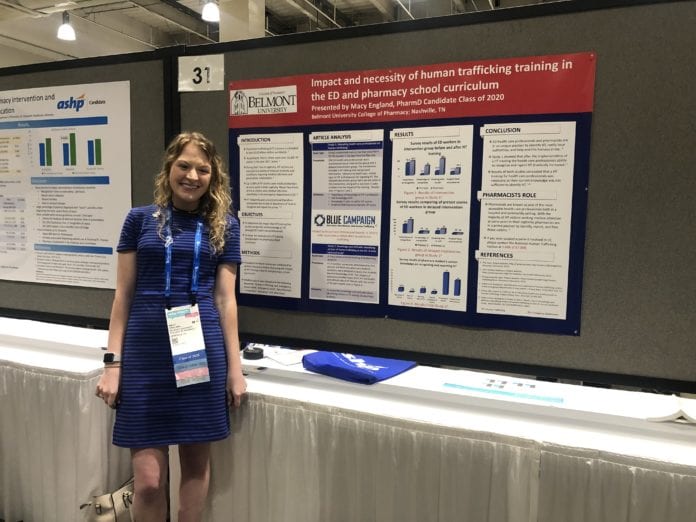During a poster session at the American Society of Health-System Pharmacists (ASHP) Summer Meeting in Boston, 2020 PharmD Candidate Macy England presented her research on the significant need for human trafficking (HT) training within pharmacy school curriculum and emergency departments (ED)
According to her presentation, “Impact and Necessity of Human Trafficking Training in the ED and Pharmacy School Curriculum,” there were more than 10,600 HT victims in the year 2017 who were reported to the National Hotline and BeFree Textline.
England said HT victims are exposed to a variety of physical ailments and conditions, and more than 88 percent of victims seek medical attention at some point in their captivity, two-thirds being in an emergency department.
“I believe that ED workers and pharmacists have the highest chance of encountering these victims,” said England in an interview with Pharmacy Times. “Yet, health care workers across the board are not educated on how to recognize the crime. And, because they’re not recognizing it, they’re not reporting it.”
In order to determine the potential impact of HT training, England conducted a targeted literature review for primary literature articles which included the following two studies.
In a randomized control trial of 20 EDs in the San Francisco Bay area, 258 ED health care professionals were placed in an intervention group, which included HT training with background information, relevance to health care, clinical signs of HT and resources to report HT. There was also a delayed intervention group, which included a pre-test, along with a post-test in order to determine the impact.
The results, published in Pediatric Emergency Care, indicated that after taking the training, approximately 91 percent of ED professionals in the intervention group knew the importance of recognition. 100 percent of the professionals knew who to call in case they came in contact with a HT victim. In the delayed intervention group, there was a 30 percent increase of knowledge the importance of recognition and a 15 percent increase in knowing who to call.
The first study showed that after the implementation of a HT training, the health care professionals ability to recognize and report HT drastically increased.
The other cross-sectional study involved 219 pharmacy students. Each student received a 17-question survey, and the questions were designed to assess the student’s baseline knowledge of HT.
The survey found that only 14 percent of pharmacy students knew the warning signs of HT, and approximately 13 percent knew the age group of victims. Published in the journal Value in Health, these results indicate that pharmacists are in a unique position to identify HT; however, the current training is insufficient.
“Pharmacists are the most accessible health care providers out there,” said England. “[The research] not only applies to them within the hospital, but in the clinic or the community setting. If these patients are going to EDs, they are definitely going to pharmacies to pick up antibiotics or pain medications.”
England recommends that pharmacy schools implement a training course for students to be aware of signs to look for and how to utilize statistics on age, race, ethnicity, etc. Most importantly, she said, such a course would include the hotline for the National Human Trafficking Hotline, and information on how to report.
“If pharmacists were aware that this is going on in front of them, then they would be inspired to look up what training they can do or how they can be used to stop this crime.”
To report human trafficking, call (888) 373-7888 or text 233733.



